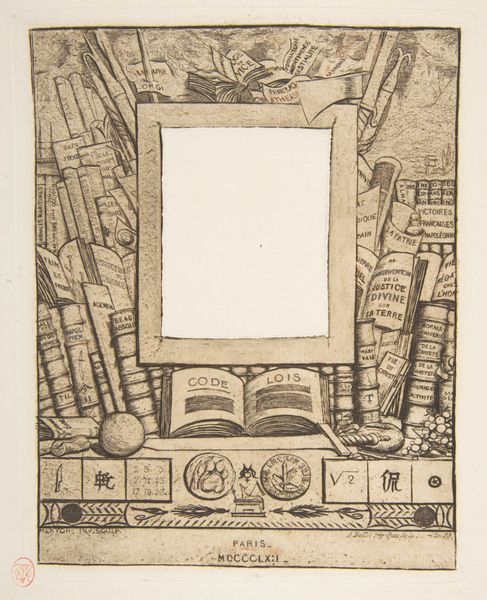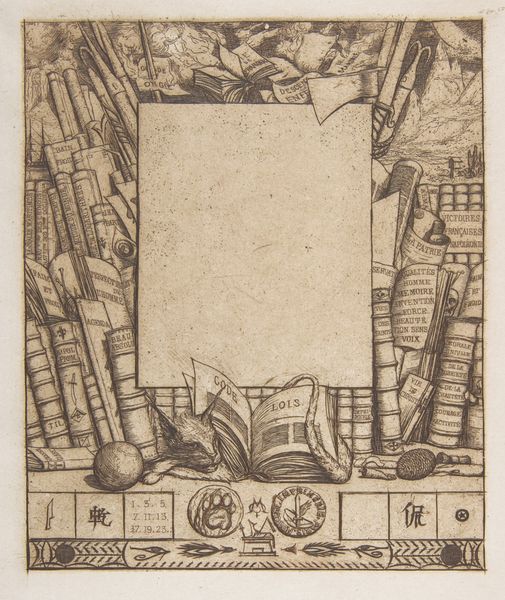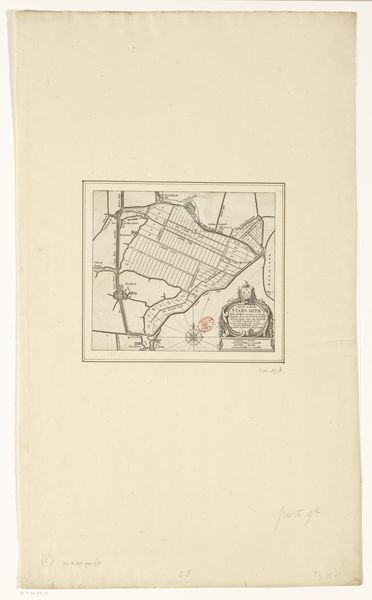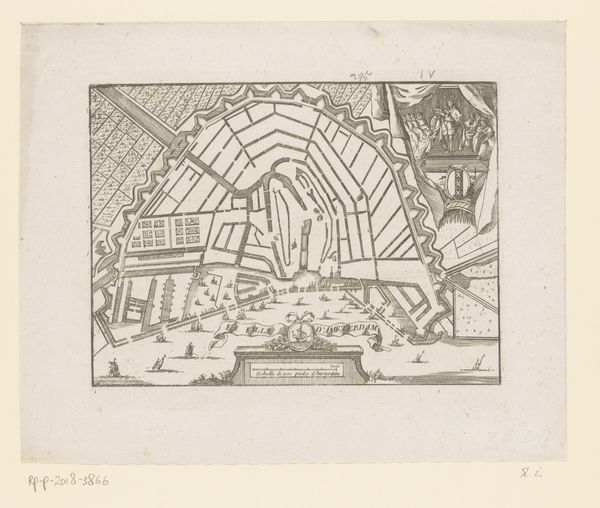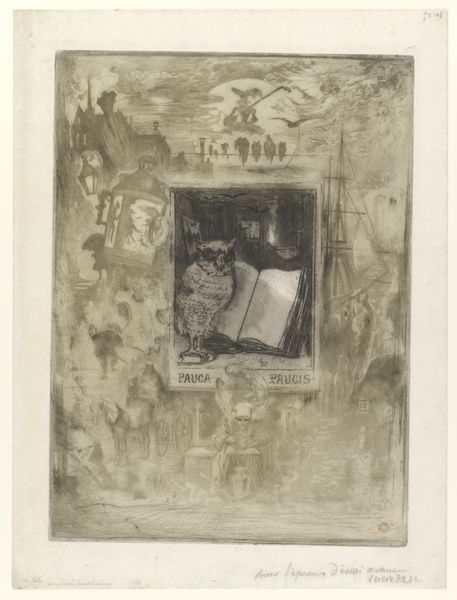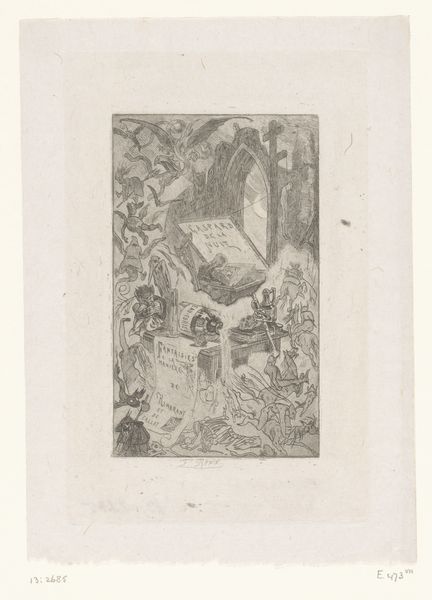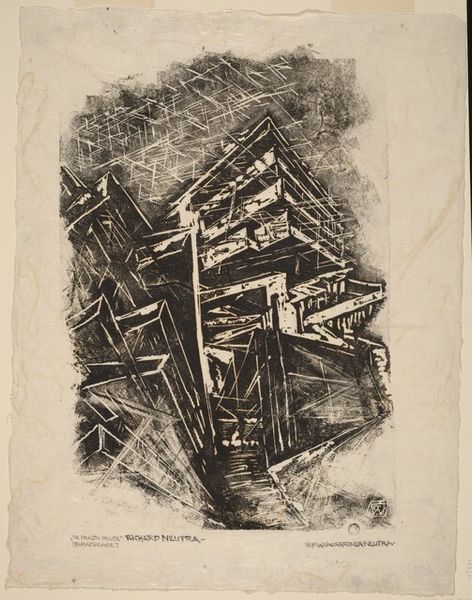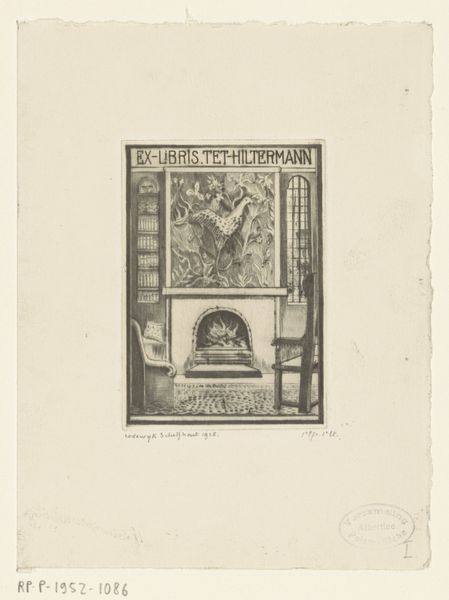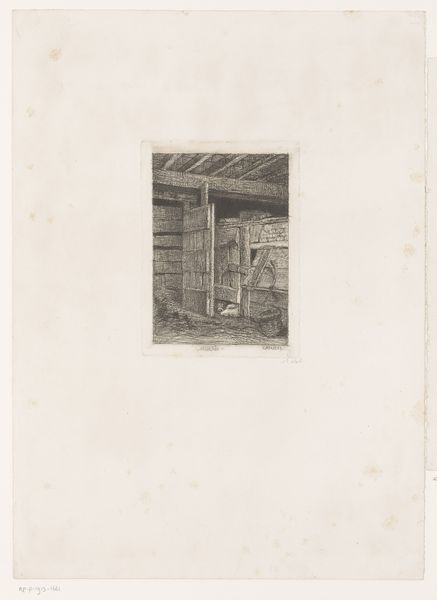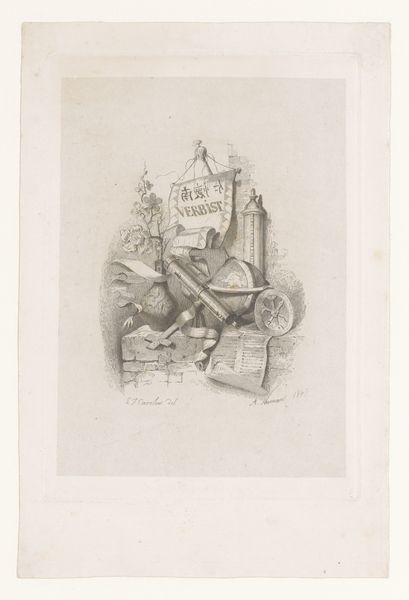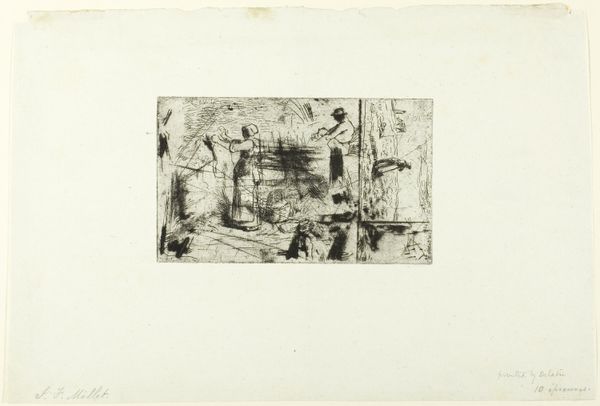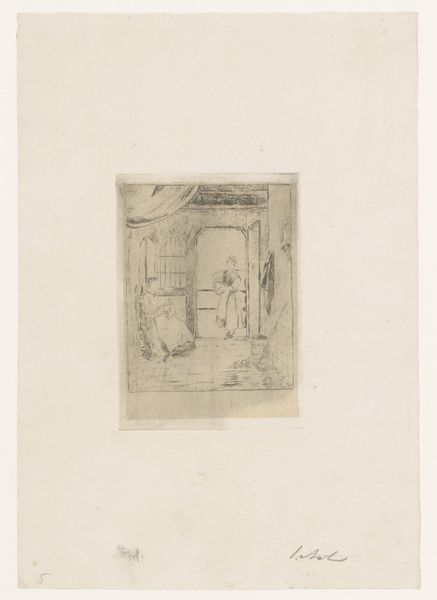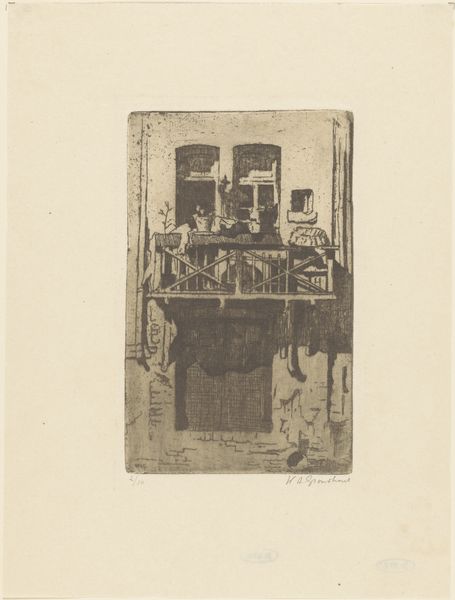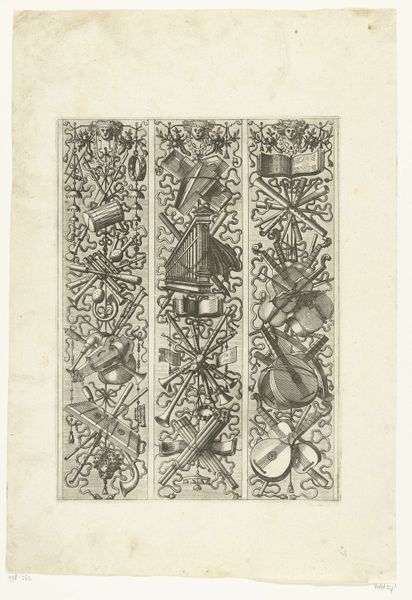
Design for a Frame for the Portrait of Armand Guéraud 1862
0:00
0:00
drawing, graphic-art, print, etching, paper
#
drawing
#
graphic-art
# print
#
etching
#
paper
#
geometric
#
line
#
academic-art
Dimensions: 144 × 135 mm (image, including stray marks); 187 × 149 mm (plate); 202 × 165 mm (sheet)
Copyright: Public Domain
Editor: Here we have Charles Meryon’s 1862 etching, "Design for a Frame for the Portrait of Armand Guéraud." It's such an intricate and detailed composition. I'm immediately drawn to all the books and symbols... what stories do you see unfolding in this piece? Curator: This frame teems with the iconography of intellect and societal power. The stacked books suggest the weight of knowledge, primarily patriarchal and academic. What strikes me, however, is how Meryon subverts expectations. Editor: Subverts? How so? Curator: Notice the details. The fox curled among the books – a creature often associated with cunning and trickery, and the various insignia along the bottom edge which feel almost satirical in their formality. Then, the empty central space—a void waiting to be filled. Consider the period: the rise of the bourgeoisie, strict societal codes...Could this frame be critiquing the very systems it appears to celebrate? What kind of portrait is supposed to occupy this empty space? Is it supposed to mirror this symbolism, or challenge it? Editor: That's a fascinating point! I hadn’t considered that the emptiness could be a deliberate statement, especially with those sly details you mentioned. Curator: And what of the fact that it is only a design, and never a realized frame? Editor: Wow, this makes me look at it with fresh eyes. It’s like Meryon is questioning the value and the very structure of intellectualism. Curator: Precisely. It's a potent reminder that art often engages in a dialogue with the dominant ideologies of its time. What appears as an emblem of the academy is also, subtly, a space where such norms and their inherent social disparities can be reevaluated. Editor: I’m leaving with a much deeper appreciation of how art can speak to, and question, the society that creates it.
Comments
No comments
Be the first to comment and join the conversation on the ultimate creative platform.
